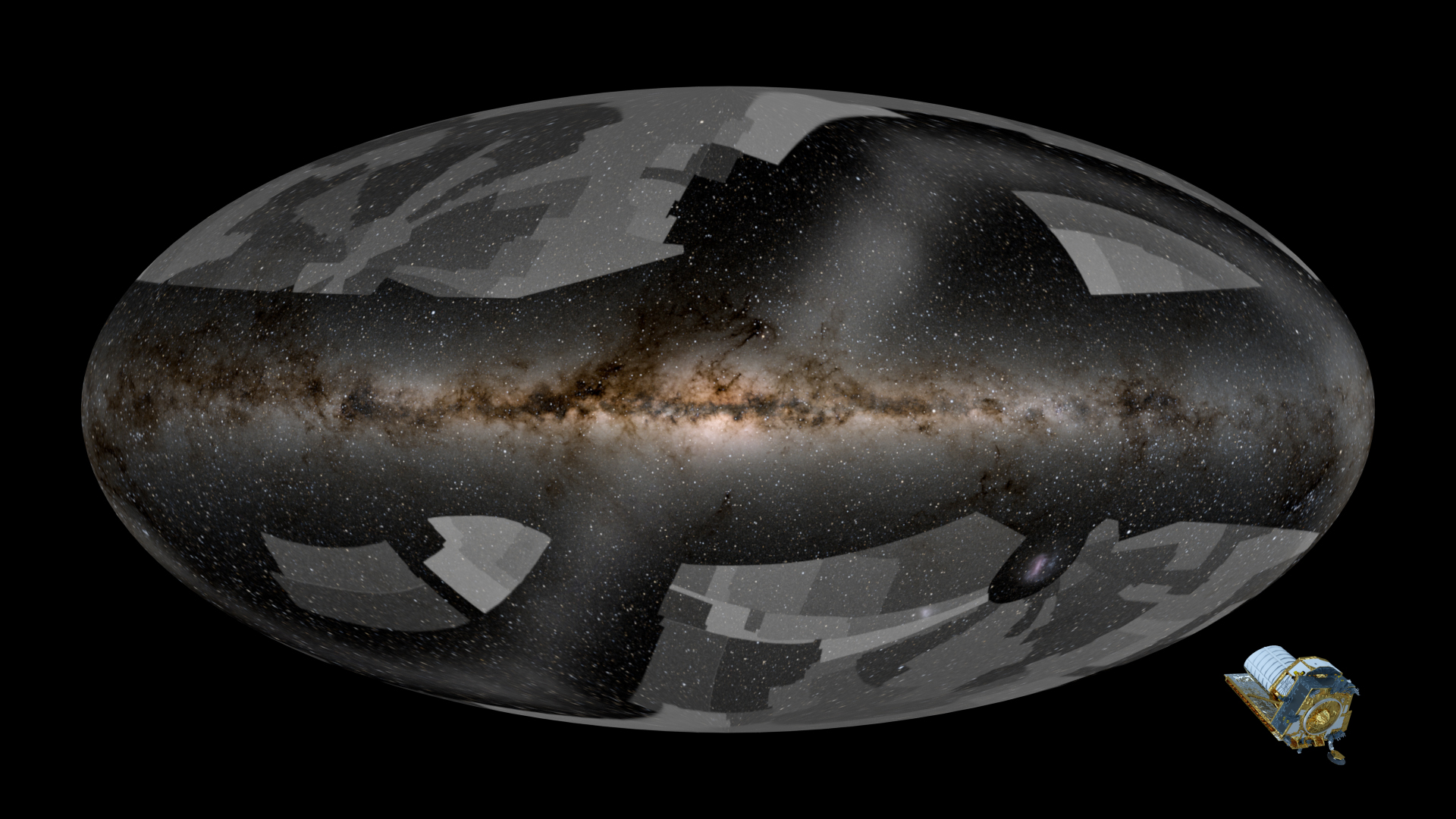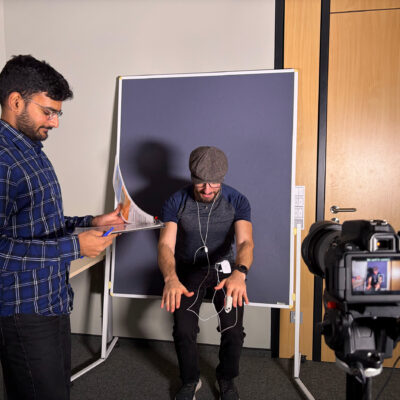Cosmology has a long tradition at Bielefeld University. The appointment of Professor Dr Cora Uhlemann adds a professorship to this field of research. Over the next five years, the project, funded by the European Research Council (ERC) with a Starting Grant totalling 1.5 million euros, will explore how galaxies are distributed in space and how large-scale structures are formed there. This will allow researchers to obtain insights into the origin of the universe and its further expansion. Cora Uhlemann pushes the boundaries of conventional methods and can draw conclusions about the gravitational force of dark matter based on new descriptions of the distribution.
Cosmologist Professor Dr Cora Uhlemann’s research focuses on the composition of our Universe, the formation and description of cosmic structures, and their distribution in space. Since the beginning of March, Ms Uhlemann’s research at Bielefeld University has included examining what the arrangement of millions of galaxies along a spider web-like structure can tell us about the past and future of our Universe. Her research project ‘Probing cosmic large-scale structure beyond the average’ is being funded for the next five years.
The research grant was originally awarded to Cora Uhlemann for 2023 and was linked to the European space research programme ‘Horizon’. Unfortunately, following the withdrawal of the UK from the programme, the cosmologist, who was researching at Newcastle University in England at the time, was no longer able to take up her European Starting Grant there. When looking around for a new home for her research project, Cora Uhlemann picked Bielefeld University.
Bielefeld University has a long history of research on cosmology and is a reputable institution in the field of space research. Therefore, Cora Uhlemann had little difficulty deciding in favour of Bielefeld in the Teutoburg Forest as a research location.
Describing the cosmos on the largest scales
Cora Uhlemann’s area of research is the structure of the universe. More specifically, it is about the distribution of billions of galaxies in space. An inconceivably large amount of observational data has to be compressed into informative summary statistics and model calculations in order to draw conclusions about the building blocks of the universe. The European Space Agency’s (ESA) Euclid space telescope is to provide the data. It was launched into space in July 2023 and will observe more than ten billion galaxies within six years.

© Mike-Dennis Müller
To date, researchers have observed that the arrangement of galaxies in space follows a certain pattern. The present basis is a kind of spider’s web with characteristic distances, which are, however, influenced significantly by an important ingredient: dark matter. It is dark matter that provides the right environment for galaxies tending to form clusters, because dark matter has a much stronger gravitational pull. The distribution of galaxies can provide cosmologists with information about how the universe is changing. For example, whether it is expanding faster or slower than initially thought. If the universe is expanding ever faster, this could dilute the density of dark matter to such an extent that it prevents new cosmic structures from forming in the future.

© ATG / ESA
Researchers’ observations to date show that normal matter, such as the atoms and elements that make up our solar system, account for only 5 per cent of the energy density of our current Universe. The remaining 95 per cent is made up of mysterious dark ingredients: dark matter, which is the gravitational force behind the formation of structure in the universe, and dark energy, which drives the Universe’s expansion.
From 2-point to 1-point statistics
‘Our research team is working on predicting exactly how gravity shapes the distribution of galaxies, leaving most regions fairly empty, but with some regions containing a large number of galaxies. By comparing fairly empty and fairly full regions, we are also better able to track down different particles. We know that dark matter must exist if we are to explain a large number of observations. But we don’t yet know how heavy these particles are,’ says Cora Uhlemann, explaining her research focus.
To date, the distribution of galaxies has been described using what are known as 2-point statistics. These can be used to describe how many galaxies are at a certain distance from each other. However, this description is not conclusive enough to distinguish between different physical processes. 1-point statistics capture additional characteristics of the web-like structure. The rule is: mass is attracted to mass. The distribution of galaxies has developed over the last ten billion years as a result of the interplay between the gravitational force of dark matter and the expansion caused by the dark energy of the universe.

© Mike-Dennis Müller
Theoretical models for determining dark matter
Cosmologists such as Cora Uhlemann are looking for a description of dark matter, which has so far only been proved by indirect evidence. Visible matter consists of elementary particles such as protons and neutrons. In contrast, the nature of dark matter is still unknown. Currently, dark matter can only be observed indirectly through its gravitational force. Neither the human eye nor telescopes can directly perceive the dark matter, because it barely interacts with light. The possible mass range of dark matter covers 80 orders of magnitude, from one trillionth of the mass of extremely light neutrinos to compact objects as heavy as the sun. Uhlemann is researching how to distinguish very light particles, which behave more like waves, from heavier particles, which tend to clump together. These parameters are also an essential part of ultimately being able to describe galaxies and their distribution.
Over the next few years, Professor Uhlemann will be working in Bielefeld on developing methods to efficiently summarize the observations of millions of galaxies and, by comparing them with theoretical predictions, find out what are the properties of dark matter, dark energy, and the early universe.

© Mike-Dennis Müller





